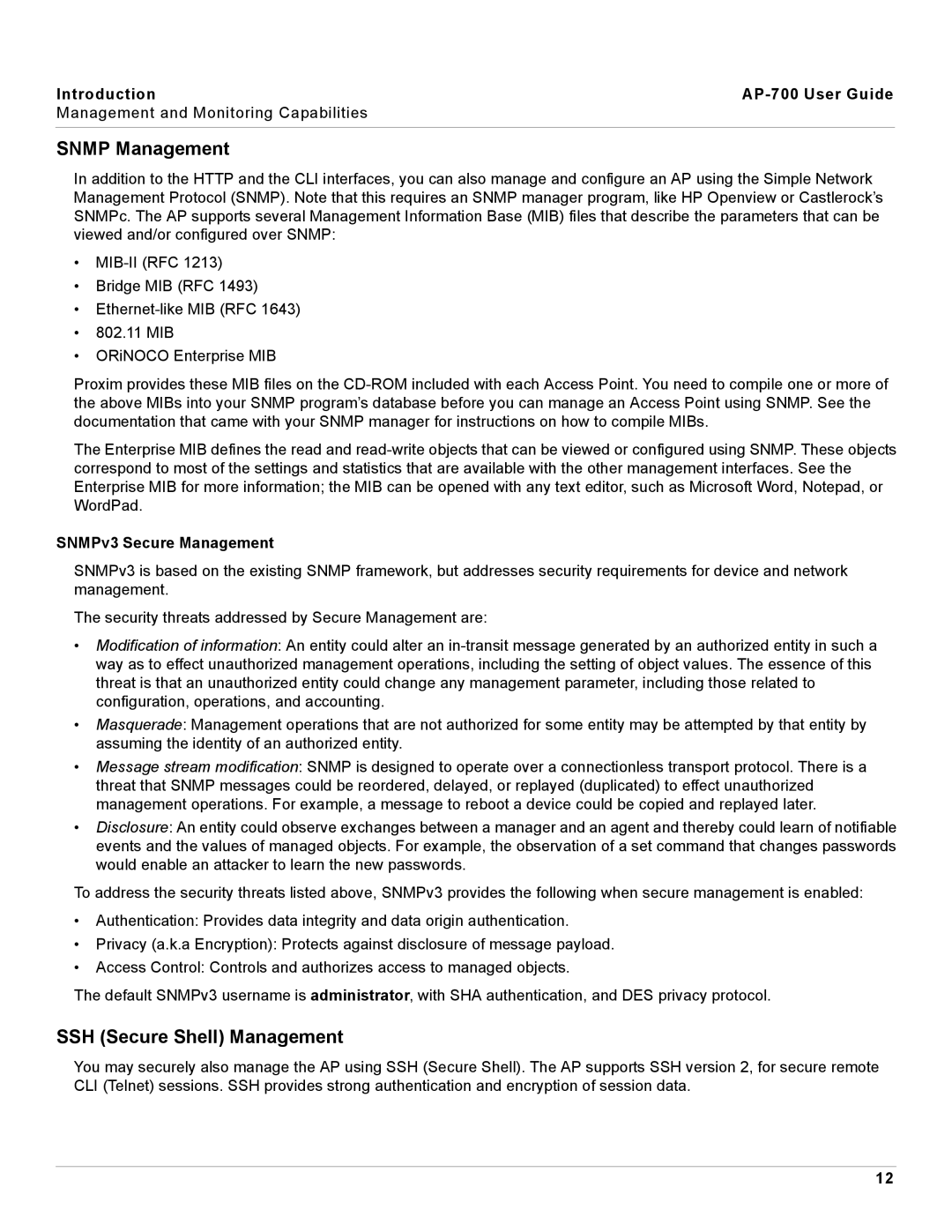Introduction |
|
Management and Monitoring Capabilities |
|
|
|
SNMP Management
In addition to the HTTP and the CLI interfaces, you can also manage and configure an AP using the Simple Network Management Protocol (SNMP). Note that this requires an SNMP manager program, like HP Openview or Castlerock’s SNMPc. The AP supports several Management Information Base (MIB) files that describe the parameters that can be viewed and/or configured over SNMP:
•
•Bridge MIB (RFC 1493)
•
•802.11 MIB
•ORiNOCO Enterprise MIB
Proxim provides these MIB files on the
The Enterprise MIB defines the read and
SNMPv3 Secure Management
SNMPv3 is based on the existing SNMP framework, but addresses security requirements for device and network management.
The security threats addressed by Secure Management are:
•Modification of information: An entity could alter an
•Masquerade: Management operations that are not authorized for some entity may be attempted by that entity by assuming the identity of an authorized entity.
•Message stream modification: SNMP is designed to operate over a connectionless transport protocol. There is a threat that SNMP messages could be reordered, delayed, or replayed (duplicated) to effect unauthorized management operations. For example, a message to reboot a device could be copied and replayed later.
•Disclosure: An entity could observe exchanges between a manager and an agent and thereby could learn of notifiable events and the values of managed objects. For example, the observation of a set command that changes passwords would enable an attacker to learn the new passwords.
To address the security threats listed above, SNMPv3 provides the following when secure management is enabled:
•Authentication: Provides data integrity and data origin authentication.
•Privacy (a.k.a Encryption): Protects against disclosure of message payload.
•Access Control: Controls and authorizes access to managed objects.
The default SNMPv3 username is administrator, with SHA authentication, and DES privacy protocol.
SSH (Secure Shell) Management
You may securely also manage the AP using SSH (Secure Shell). The AP supports SSH version 2, for secure remote CLI (Telnet) sessions. SSH provides strong authentication and encryption of session data.
12
